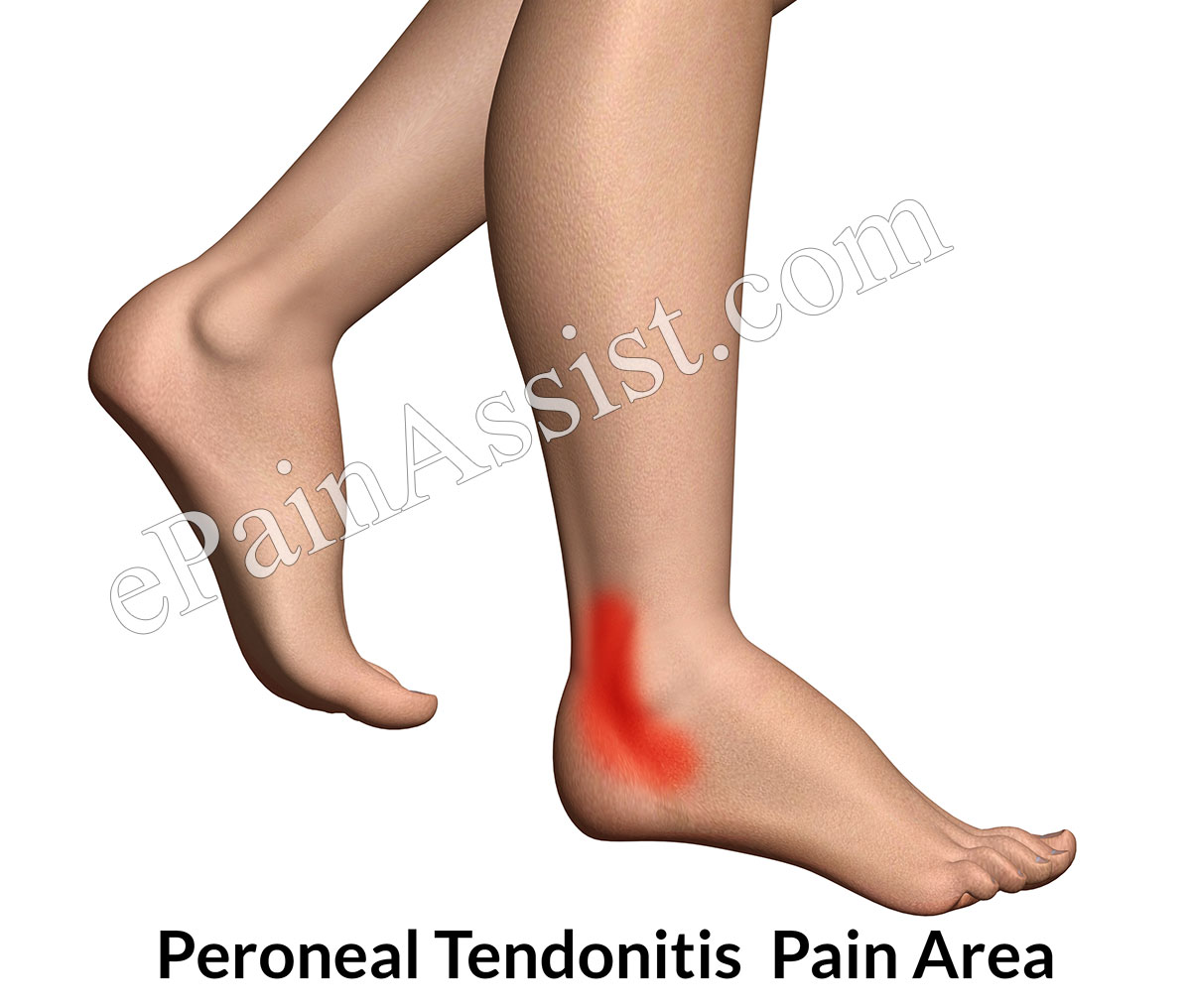What is Peroneal Tendonitis or Peroneal Tendinitis?
The peroneal muscles are located on the external side of the lower leg. The function of these muscles is moving the ankle and the foot away from the midline of the body i.e. eversion. When there is excessive contraction in the peroneal muscles, it causes excessive tension in the peroneal tendons resulting in damage or injury to the peroneal tendons. Repetition or excessive force causes damage to the peroneal tendons leading to degeneration and inflammation of the peroneal tendon. This condition is known as peroneal tendonitis or peroneal tendinitis. The peroneal tendons are located behind the lateral malleolus on the external side of the ankle. Inflammation of these tendons causes pain and swelling on the outer ankle.

What are Peroneal Tendons & What are its Functions?
The peroneal tendons are located behind the lateral malleolus on the external side of the ankle. Inflammation of peroneal tendons cause pain and swelling on the outer ankle. The peroneus longus tendon is present around the posterior side of the lateral malleolus, under the foot and joins at the external side of the first metatarsal and cuneiform bones. The peroneus brevis tendon spreads around the posterior side of the lateral malleolus and joins the external side of the foot at the root of the 5th metatarsal. Tendinopathy or tendonitis is an injury caused due to chronic overuse of the tendons. It can affect any of the various tendons present in the body. Overuse of the tendon and muscle causes inflammation of the tendon. The peroneal muscles are located on the external side of the lower leg.
The function of these muscles is moving the ankle and the foot away from the midline of the body i.e. eversion. When there is excessive contraction in the peroneal muscles, it causes excessive tension to the peroneal tendons resulting in damage or injury to the peroneal tendons. Repetition or excessive force causes damage to the peroneal tendons leading to degeneration and inflammation of the peroneal tendon. This condition is known as peroneal tendonitis or peroneal tendinitis.
Symptoms of Peroneal Tendonitis or Peroneal Tendinitis
- A person suffering from Peroneal Tendonitis or Peroneal Tendinitis will have symptoms of pain on the external side of the ankle or heel.
- Symptoms of Pain associated with Peroneal Tendonitis or Peroneal Tendinitis is usually of gradual onset and increases with activities.
- One of the symptoms of Peroneal Tendonitis or Peroneal Tendinitis is swelling on the external side of the ankle or heel.
- Increasing pain with activity and improving with rest.
- Pain upon pressure on the peroneal tendons is also a symptoms of Peroneal Tendonitis or Peroneal Tendinitis.
- Pain upon passive inversion and resisted eversion of the foot.
- Tense or stiff calf muscles is also a symptoms of Peroneal Tendonitis or Peroneal Tendinitis.

Causes of Peroneal Tendonitis or Peroneal Tendinitis
- Excessive running on uneven surfaces such as slopes causes excessive eversion of the foot and this can cause Peroneal Tendonitis or Peroneal Tendinitis.
- Tense or stiff calf muscles or peroneal muscles.
- Overuse of the muscles or tendons especially seen in basketball players or dancers can also cause Peroneal Tendonitis or Peroneal Tendinitis.
- Overpronation of the foot or excessive eversion of the foot generally causes Peroneal Tendonitis or Peroneal Tendinitis.
- Weakness of the peroneal muscles can cause Peroneal Tendonitis or Peroneal Tendinitis.
- Joint stiffness especially the foot and ankle joints.
- Excessive exercise or training can lead to Peroneal Tendonitis or Peroneal Tendinitis.
- Poor biomechanics of the foot.
- Inappropriate or ill fitting footwear
- Lack of proper warm up before exercise.
- Muscle imbalances may also lead to Peroneal Tendonitis or Peroneal Tendinitis.
- Incorrect running techniques is also a cause of Peroneal Tendonitis or Peroneal Tendinitis.

Treatment of Peroneal Tendonitis or Peroneal Tendinitis
Peroneal tendonitis without significant peroneal tendon tear can be treated conservatively without surgery. Conservative treatment for peroneal tendonitis or peroneal tendinitis involves rest and may also require the feet being immobilized in a shortleg walking boot or an ankle brace for 15 days to a month.
NSAIDs (non steroidal anti inflammatory drugs) maybe prescribed to help in reducing pain and inflammation associated with Peroneal Tendonitis or Peroneal Tendinitis.
Physical therapy is beneficial in treating peroneal tendonitis or peroneal tendinitis. Physical therapy may include may use ice, heat, and ultrasound. Stretching the calf muscles and the peroneal muscles helps managing Peroneal Tendonitis or Peroneal Tendinitis.
Massage therapy is also beneficial in treating Peroneal Tendonitis or Peroneal Tendinitis. Sports massage and deep tissue massage can be done to the peroneal muscles. It helps in decreasing the tension and strengthening the muscles.
People with significant peroneal tendon tear may need to undergo surgery. Surgery performed to treat severe cases of Peroneal Tendonitis or Peroneal Tendinitis is called Tendon Release.
Recovery Period of Peroneal Tendonitis or Peroneal Tendinitis
Complete recovery following surgical treatment for peroneal tendonitis or peroneal tendinitis may take up to 4 months. Recovery period for minor peroneal tendonitis or peroneal tendinitis could be 4-6 weeks.
